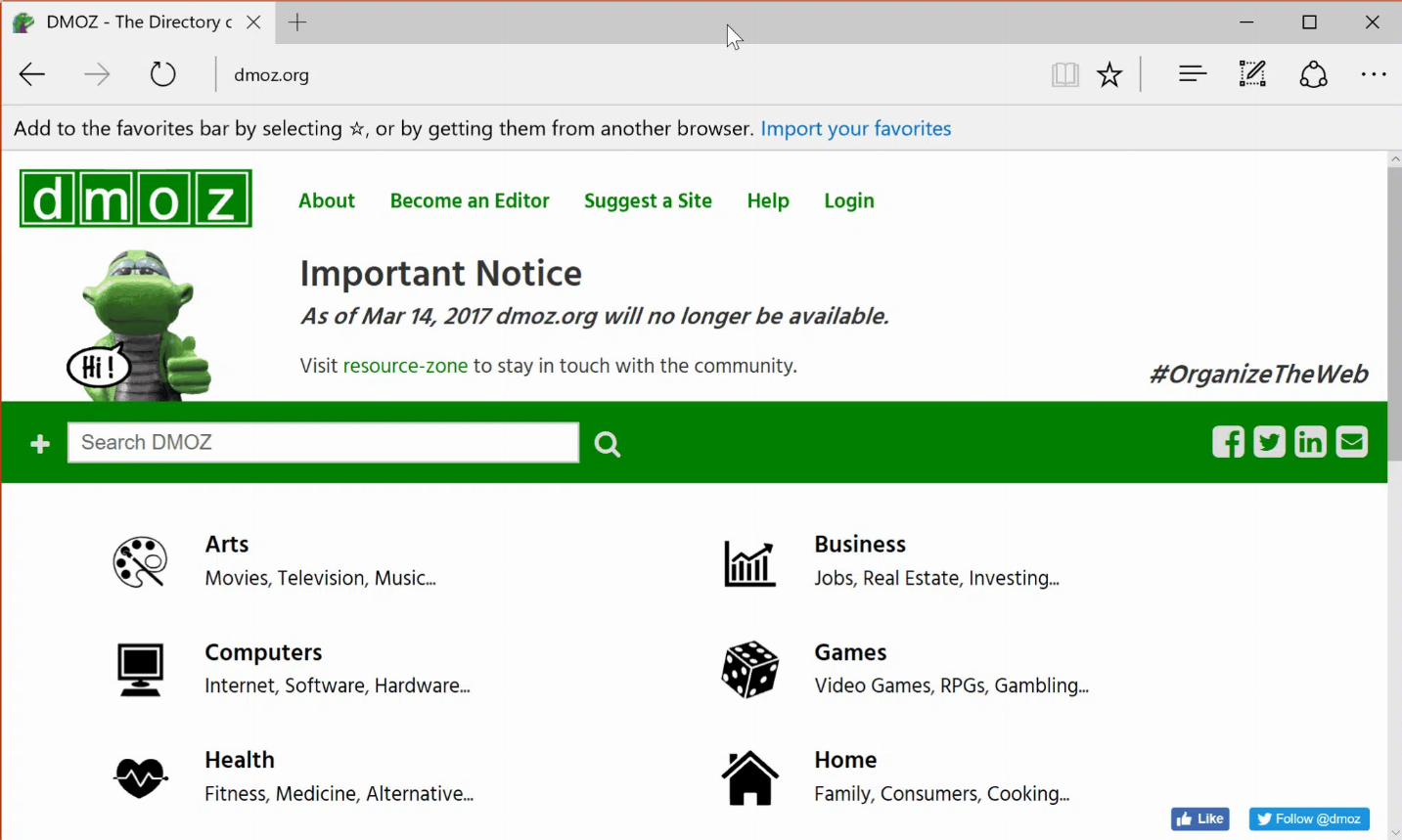Explore the nostalgic categories and subcategories of DMOZ, and discover its roots as an essential resource for navigating the early web.
DMOZ: A Nostalgic Trip Down Memory Lane to the Early Days of the Web
In the vast landscape of today's web, brimming with sophisticated search engines and complex algorithms, it's easy to forget the humble beginnings of online organization. Before the rise of giants like Google and Yahoo, web navigation was a task entrusted to human-curated topic directories. Among these, DMOZ (Open Directory Project) stood as a colossus, offering users an invaluable compass to orient themselves through the expanding maze of websites.
Born in 1998, DMOZ was a collaborative project fueled by an army of dedicated volunteers who meticulously cataloged and categorized websites. Each webpage was manually assigned to an appropriate category, creating a taxonomic hierarchy that allowed users to explore topics of interest in an intuitive way.
In an era when algorithm-based search engines were still in their infancy, DMOZ represented a fundamental landmark for discovering online content. Its extensive directory, carefully organized, enabled users to find relevant and trustworthy websites with ease, avoiding getting lost in the ever-expanding digital ocean.
Beyond its navigational function, DMOZ was also a hub for community and information exchange. User communities gathered to discuss specific topics, share tips, and recommend favorite websites. DMOZ thus became a focal point for the nascent web culture, fostering a sense of connection and collaboration among users.
As technology progressed and increasingly powerful search engines emerged, DMOZ's role gradually diminished. The effectiveness of automated search algorithms made manual website cataloging less necessary, and DMOZ gave way to the convenience and speed of keyword-based searches.
However, DMOZ's legacy remains etched in the history of the web. Its influence on web culture and architecture is undeniable, having helped shape the way we navigate, organize, and consume digital information. DMOZ stands as a monument to the dedication and ingenuity of web pioneers, reminding us of the invaluable worth of human labor in the digital age.
Today, DMOZ lives on as a fascinating relic, a memento of a bygone era that reminds us of the roots of the web we take for granted. Exploring its old directory is like taking a trip back in time, a nostalgic dive into a world of manual connections and meticulous organization. DMOZ is a reminder of human power in the digital age, a tribute to the passion and dedication that fueled the early web and laid the foundation for the interconnected world we enjoy today.
